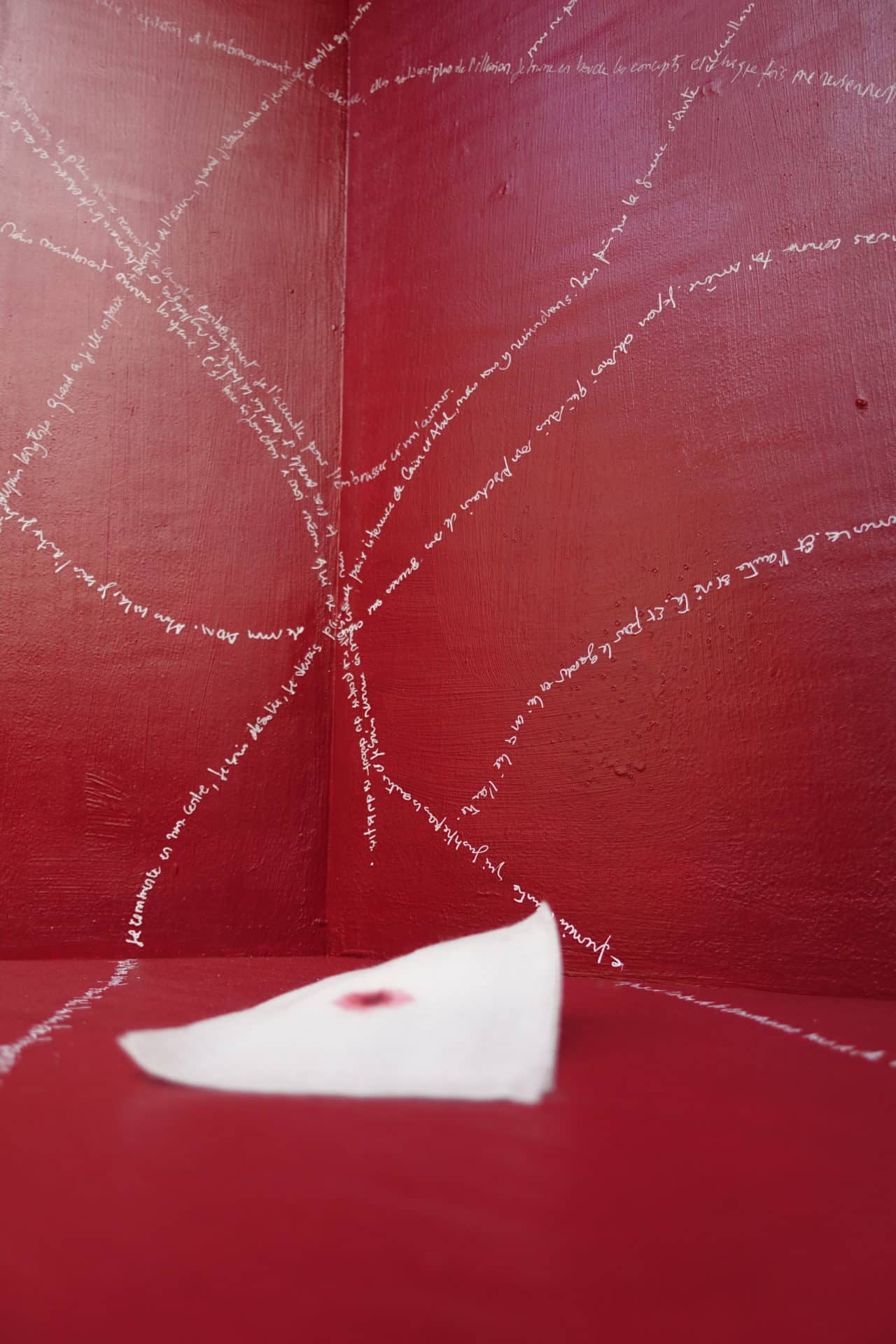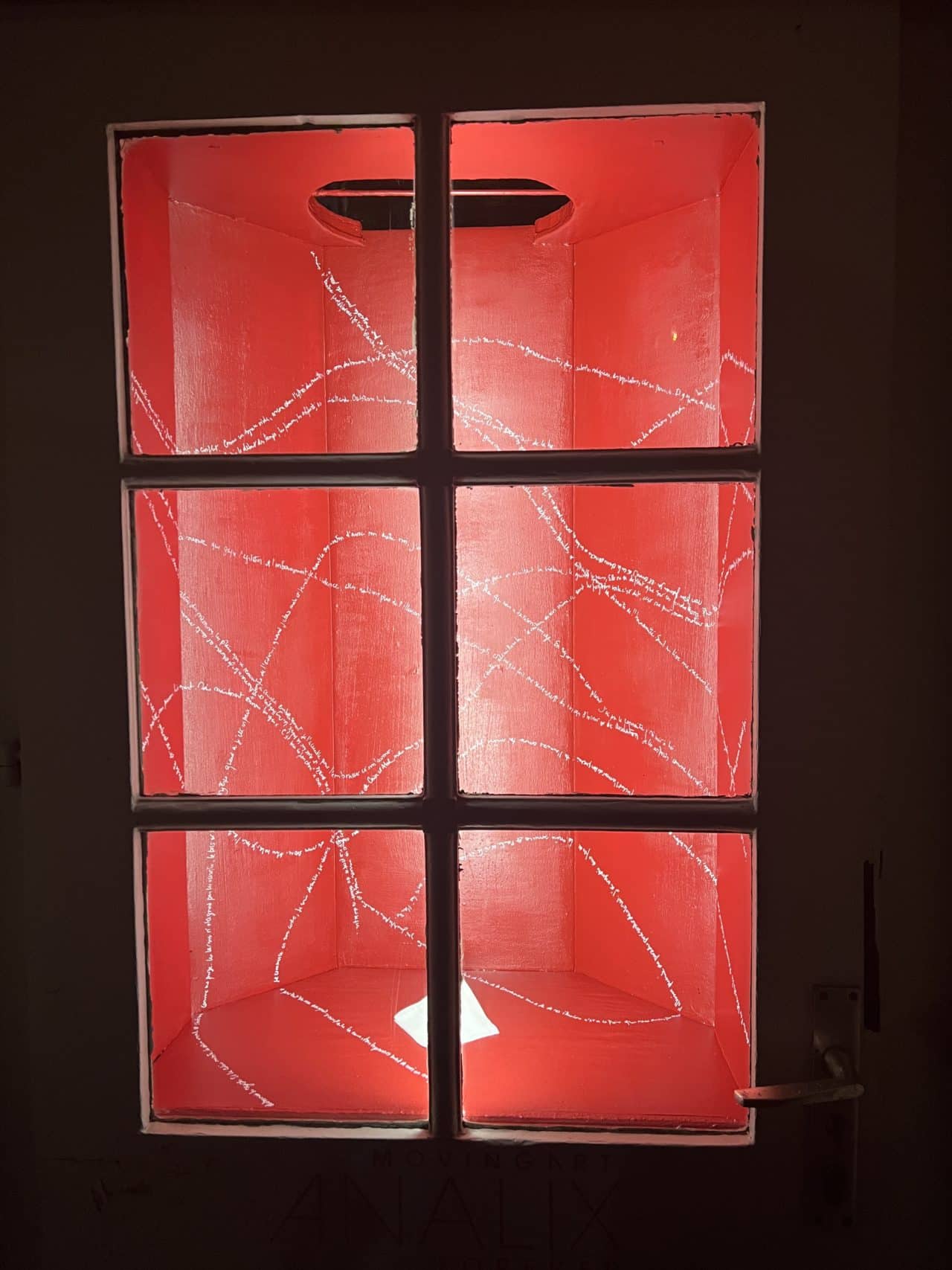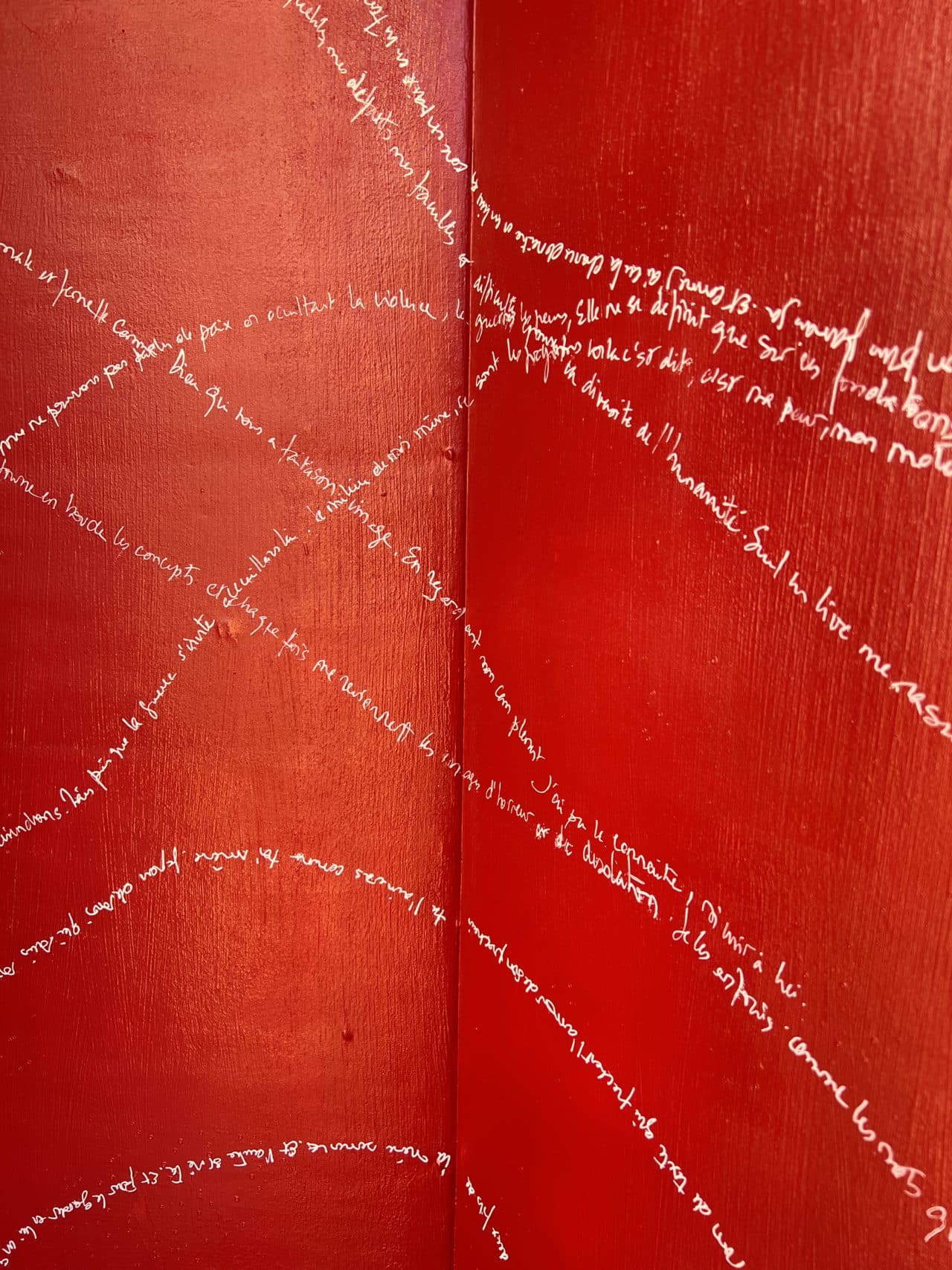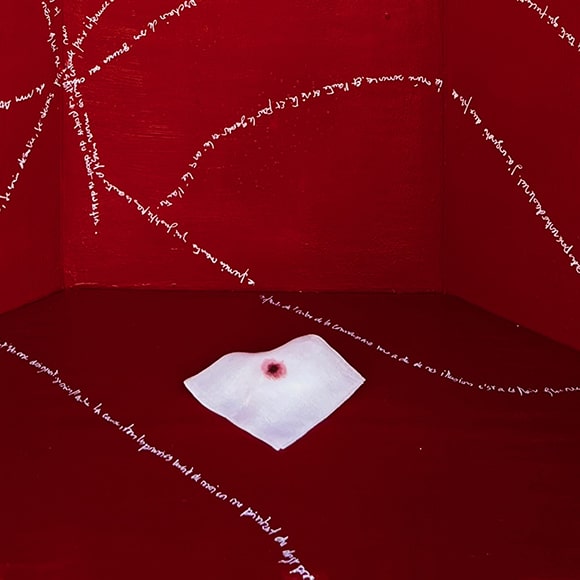In Peace – Caïn et Abel
On October 9, 2023, I installed “At Peace – Cain and Abel” at the Analix Forever gallery in Geneva, a work that had been conceived and proposed since July. A clear demonstration, if ever there was one, of the importance of art in how we perceive and repair the world.
I had imagined this installation as a prelude to Peace. Beyond our apprehensions of what is external to us lies the fear of what we are. We blame, hate, and fight outside ourselves the unknowns that are in fact reflections of our own being. The other—mirror—held responsible for our misfortunes and for the wars we wage within ourselves.
This is how I thought of Cain and Abel, sharing the same blood, the same flesh. They are two faces of the same body, just like their parents before them. And God who, as soon as He creates them in His image, allows one to kill the Other, and then demands an account from the survivor. Cain is banished, marked with a seal that signals his infamy and protects him at the same time. After them comes the flood, yet Cain and Abel remain within us.
“…I make two observations. First, that the notion of peace is a human concept—constructed, phantasmagorical—of which I know no positive definition.
It is the absence of a state of war, of conflict, an awareness of a lost state, a suspended moment. Barbara, following Levinas, speaks of unquietness, because peace would mean taking the other into account.
Even alone, removed from the world, Man manufactures terrors, expectations, memories, regrets—and thus a rupture with himself.
Beyond our fears of what is external to us, there is the fear of what we are. These unknown or denied dimensions are those we recognize outside ourselves, fight against, hate, and blame. The other—mirror—responsible for our misfortunes and for the wars we wage on ourselves.
This is how I thought of Cain and Abel, sharing the same blood, the same flesh. They are two faces of one body, just as their parents before them. Immediately, one kills the Other. Cain is banished, marked with a seal that signals his infamy and protects him at the same time.
In Hebrew, the word closest to “peace” in the French or English sense is shalom (שָׁלוֹם); it also means “to be whole” and “to make whole.” Peace is giving back to the other and returning to oneself.
We are Cain—marked—and Abel—dead. And this is my second observation: there is no peace outside oneself.
And this is the proposition I make here in half a square meter, the volume of a thorax, our guts laid open, our thoughts exposed, and at the back, an incongruous gauze. And a single drop of blood that stains the good divine order.
Just one drop of Abel’s blood…”








On October 9, 2023, I installed “At Peace – Cain and Abel” at the Analix Forever gallery in Geneva, a work that had been conceived and proposed since July. A clear demonstration, if ever there was one, of the importance of art in how we perceive and repair the world.
I had imagined this installation as a prelude to Peace. Beyond our apprehensions of what is external to us lies the fear of what we are. We blame, hate, and fight outside ourselves the unknowns that are in fact reflections of our own being. The other—mirror—held responsible for our misfortunes and for the wars we wage within ourselves.
This is how I thought of Cain and Abel, sharing the same blood, the same flesh. They are two faces of the same body, just like their parents before them. And God who, as soon as He creates them in His image, allows one to kill the Other, and then demands an account from the survivor. Cain is banished, marked with a seal that signals his infamy and protects him at the same time. After them comes the flood, yet Cain and Abel remain within us.
“…I make two observations. First, that the notion of peace is a human concept—constructed, phantasmagorical—of which I know no positive definition.
It is the absence of a state of war, of conflict, an awareness of a lost state, a suspended moment. Barbara, following Levinas, speaks of unquietness, because peace would mean taking the other into account.
Even alone, removed from the world, Man manufactures terrors, expectations, memories, regrets—and thus a rupture with himself.
Beyond our fears of what is external to us, there is the fear of what we are. These unknown or denied dimensions are those we recognize outside ourselves, fight against, hate, and blame. The other—mirror—responsible for our misfortunes and for the wars we wage on ourselves.
This is how I thought of Cain and Abel, sharing the same blood, the same flesh. They are two faces of one body, just as their parents before them. Immediately, one kills the Other. Cain is banished, marked with a seal that signals his infamy and protects him at the same time.
In Hebrew, the word closest to “peace” in the French or English sense is shalom (שָׁלוֹם); it also means “to be whole” and “to make whole.” Peace is giving back to the other and returning to oneself.
We are Cain—marked—and Abel—dead. And this is my second observation: there is no peace outside oneself.
And this is the proposition I make here in half a square meter, the volume of a thorax, our guts laid open, our thoughts exposed, and at the back, an incongruous gauze. And a single drop of blood that stains the good divine order.
Just one drop of Abel’s blood…”